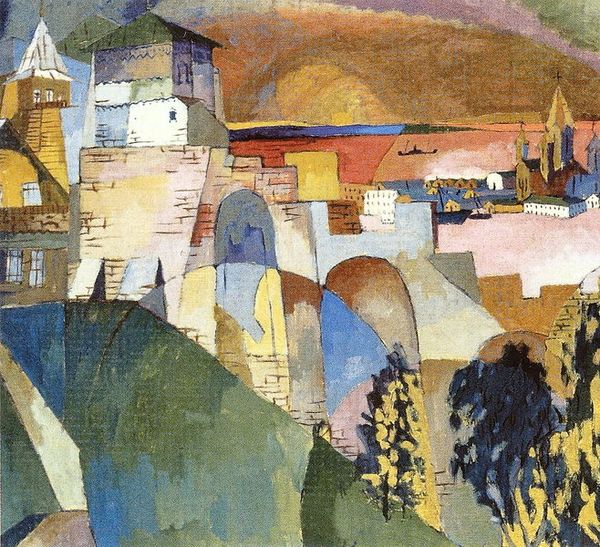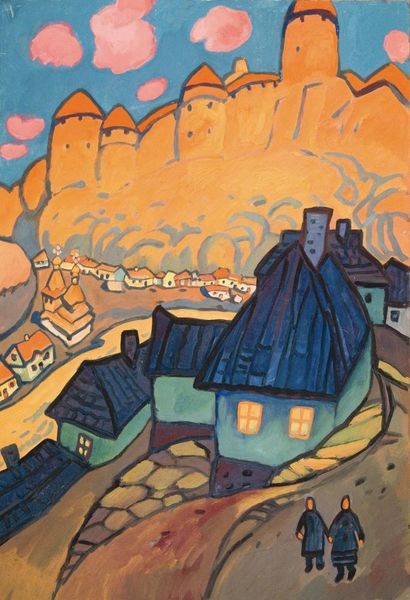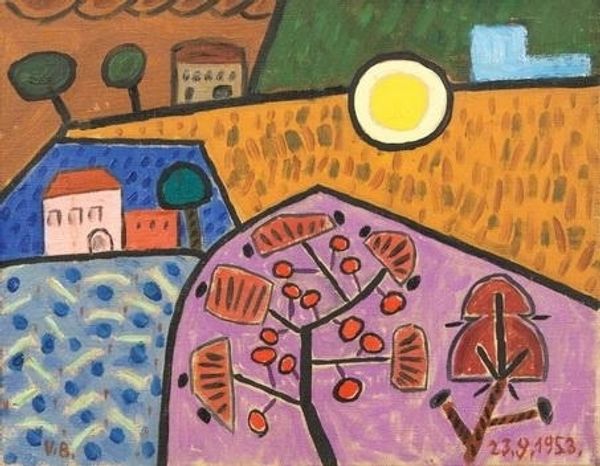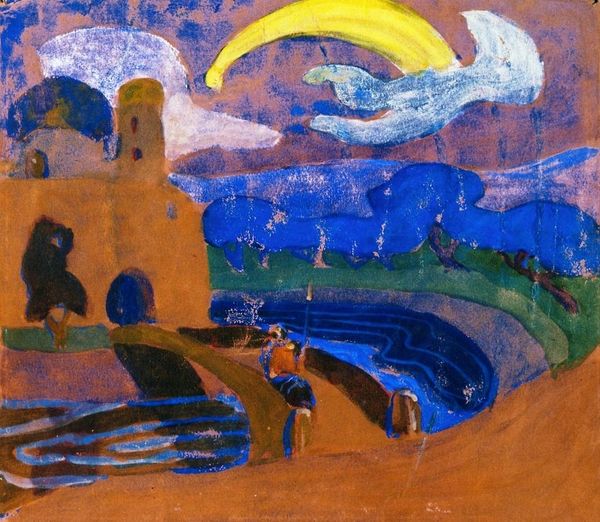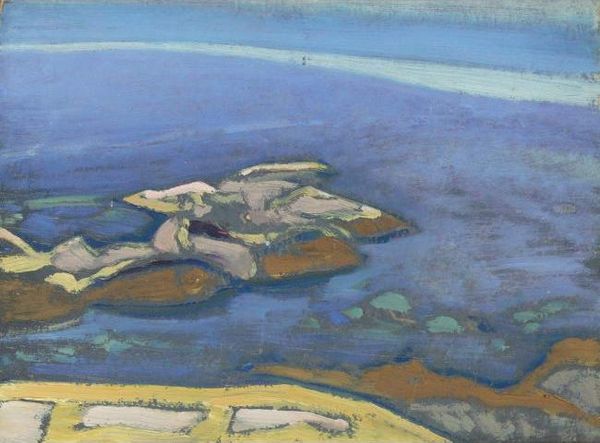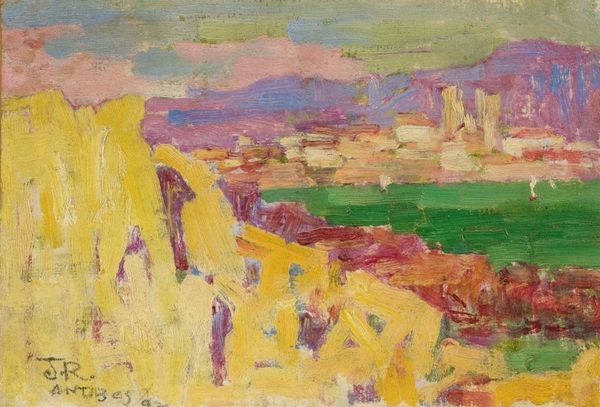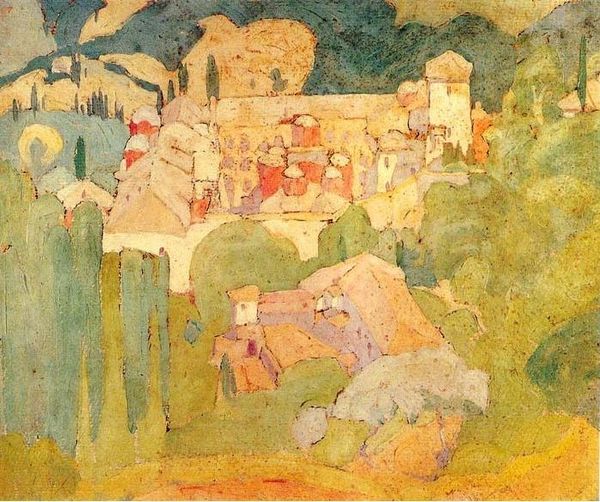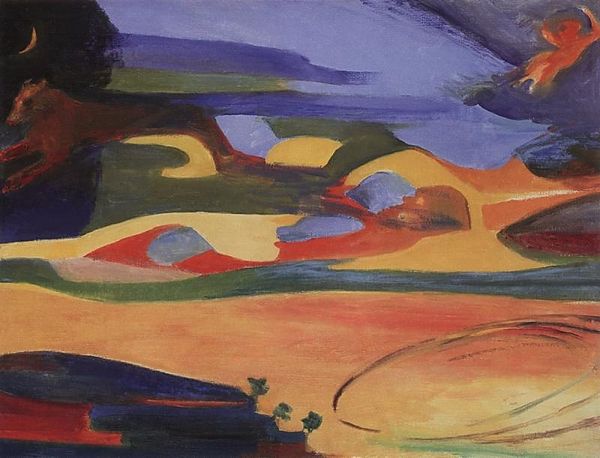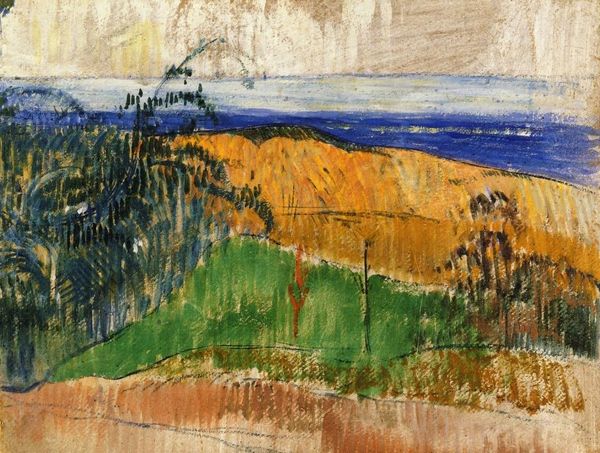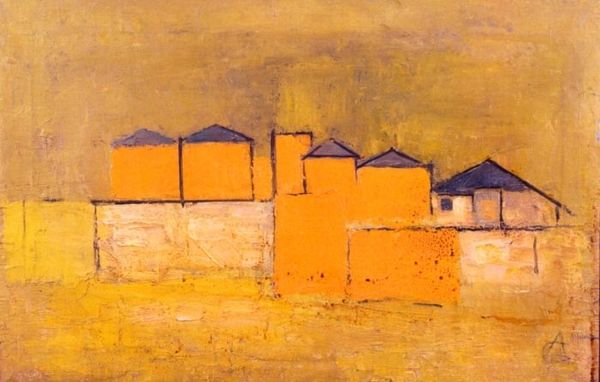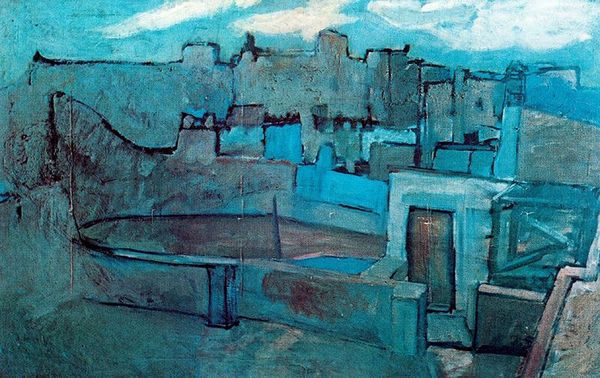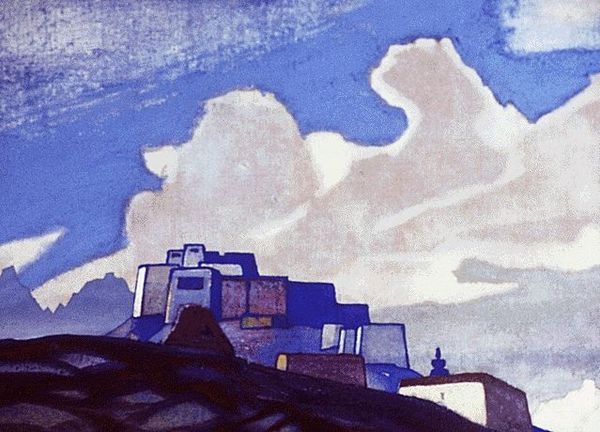
tempera, painting
#
tempera
#
painting
#
landscape
#
handmade artwork painting
#
expressionism
#
naive art
#
cityscape
#
painting art
#
early-renaissance
#
expressionist
Copyright: Public domain
Editor: Wassily Kandinsky's "Walled City in Autumn Landscape," painted in 1902 using tempera, presents such a simplified, almost childlike depiction of a cityscape. It’s really charming. How do you interpret this work? Curator: It’s tempting to view this as naive, but considering the historical context, let’s examine Kandinsky's relationship with the evolving artistic institutions of his time. Do you notice how the landscape seems flattened? The colours, though vibrant, don't create a convincing sense of depth. Editor: Yes, it’s almost like looking at a stage set. Curator: Exactly! This intentional distortion aligns with the burgeoning Expressionist movement's rejection of academic realism. Consider the Secessionist exhibitions of the era and their efforts to defy institutional norms by showing "primitive art" alongside avant-garde pieces. This aesthetic flattening challenges the established traditions that the old academy represents, and makes you wonder, who is deciding what art "should" be? Editor: So it's not just about depicting a place; it's a statement against the art establishment? Curator: Precisely! And think about the social and political anxieties simmering beneath the surface in early 20th-century Europe. Artists began looking inward, turning to abstraction to capture deeper, less tangible truths. The image becomes less about the "walled city" itself and more about expressing something beyond its physical reality, almost utopian. Editor: That makes me see it differently. The deliberate simplification and bold color choices aren't just stylistic; they're a rejection of what art was expected to be. I appreciate Kandinsky’s role in redefining artistic conventions! Curator: It certainly reflects a radical questioning of the art world’s power structures and established visual languages. I think the artwork encapsulates how avant-garde painters sought legitimacy beyond the Parisian art scene in places where new aesthetic conventions could freely emerge and contest art historical expectations.
Comments
No comments
Be the first to comment and join the conversation on the ultimate creative platform.
